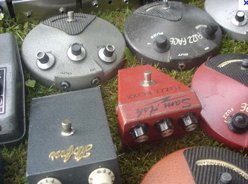Of course the topic of the best fuzz pedal is one that is highly subjective. Everyone has their own taste. So we’re going to list for you some fuzz pedals that we think are some of the top ones. This list will not include vintage pedals that aren’t made anymore, because of course a real ’60s Dallas Arbiter Fuzz would would beat anything! Of course, our opinion. So check out this list of some of the top fuzz pedals that are made today.
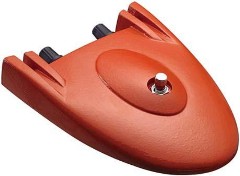 Roger Mayer Axis Fuzz
Roger Mayer Axis Fuzz
One of our personal favorites, the Roger Mayer Axis Fuzz can get some of the best fuzz tones, if done right. I say this because it won’t work great through any amp configuration. Rather, it was designed for Marshall Plexi stacks that already have a good amount of natural tube overdrive without any pedal. Kick on the Axis fuzz and you are taken through different dimensions with unlimited amounts of fuzz and sustain, running through a field of screaming feedback. An absolute world of expression is possible with the Axis Fuzz through the right rig.
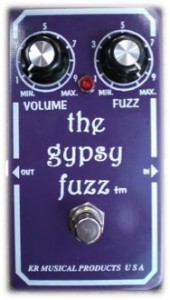 KR Gypsy Fuzz
KR Gypsy Fuzz
KR Musical, a company that often disappears is still known for making some of the best sounding pedals out there, particularly in the Hendrix category. Their Gypsy Fuzz is no different, offering an aggressive silicon fuzz tone that has a growl to it. It is reminiscent of the Axis Fuzz, though it is a little smoother in tone. Also KR’s The Fuzz is amazing as well.
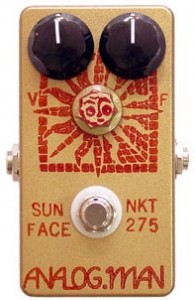 Analog Man Sun Face Fuzz
Analog Man Sun Face Fuzz
Analog Man has long been known on the boutique-market as a maker of great vintage sounding all-analog effects. The Sun Face is no different, and offers that vintage sound based on their choice of transistors. Actually these pedals are made to order, so you can choose which silicon or germanium transistors you want for your Sun Face. It gets pretty specific as you can get transistors that are actually from the ’60s. Also with the option of a sundial, this allows you to control the internal bias without opening up the pedal, essentially allowing you to tweak the fuzz to your amp and room temperature on the fly.
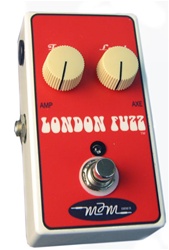 MJM London Fuzz 1
MJM London Fuzz 1
With matched vintage germanium transistors, the London Fuzz will give you some of the sweetest sounding clean tones when you roll your guitar’s volume back. Not fully clean but can be depending on your pick attack. It really brings out a colourful chime in that area. When cranked, a fat warm fuzz tone really makes your single notes seem like they weigh a ton. MJM’s silicon version of the London Fuzz is great also.
These are the best fuzz pedals on the market in our opinion. What do you think is the best fuzz out there? Feel free to post your answer in the comments sections.
